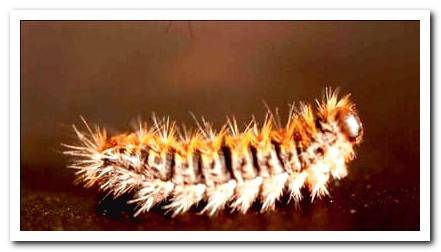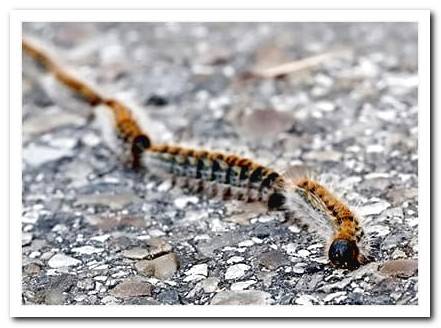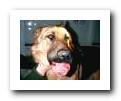What is a processionary?
It is a scientifically named caterpillar Thaumetopoea pityocampa, whose body is covered with fine hairs that contain a toxin called Thaumatopina. This type of caterpillar is also known as pine processionary since it lives mainly in pine forests, although it can survive in cedars and firs.
Its main development occurs in spring, when it leaves the nest and forming a row with other specimens of the same species it begins to move in search of other trees to invade, hence its name of processionary, since it moves in procession.
Their hairs are so light that even a gust of air can carry them with them, with the added danger of the annoying toxin they contain. In contact with humans they are very toxic, just as it happens in contact with our beloved dogs.

How can the processionary harm our dog?
Although it looks like a small and harmless caterpillar, it is highly dangerous since the hairs that cover it contain a toxin. Our dogs can see it walking on the ground or trying to climb a tree, something very curious since it is a small “bug” moving, which will arouse their curiosity.
When they try to smell it, bite it, suck it or just brush against it…. the caterpillar sheds its hairs with the toxin, which causes our dogs to be immediately intoxicated with the serious consequences that this entails.

What are the symptoms of a processionary sting?
If our dog is stung by a processionary, we will notice it right away. He will notice intense itching in the affected area, usually the nose, tongue, mouth or throat. Will suffer a great skin irritation that we will be able to appreciate for the blushed color of the area, in addition to an inflammation that although it may initially seem mild, in a short time it intensified considerably.
The dog will start trying to scratch with its paws, it will leave the tongue out of the mouth due to the inflammation, we will see how its lips become inflamed too, it will be more excited and nervous, it is possible that it vomits and even that its tongue or lips change color .
What to do if your dog is bitten by a processionary?
The first thing is not to lose your calm, look for clean water and wash the affected area (if it is warm water, better, if not, just clean water). Once the area is cleaned, immediately go to a veterinaryn to administer fast-acting corticosteroids, most likely they will be administered via a route, since it is the most effective way if speed is sought.
The main problem of this type of bites is inflammation, our dog could die suffocated (without exaggeration, it is something very common in these bites). Corticosteroids will help prevent and treat inflammation, although depending on the severity of the sting, some areas may be left with necrosis.
In short, the most important thing in these cases is the speed with which we treat our dog. Thoroughly washing the affected area and going to a vet immediately is essential to save our dog’s life.

What is the treatment for processionary stings?
Depending on the severity of the bite, the size of the dog and the situation in particular … it is possible that simply a treatment based on fast-acting corticosteroids is administered or an antibiotic is added.
Most dogs do not require veterinary admission, but if the bite or inflammation is severe, they will most likely spend at least a couple of nights at the veterinary center.
It is extremely important to go to a veterinaryn, this is not something that can be solved at home, or with the medicines of a friend who had the same problem … each case has a different severity and a more or less intense treatment.
How to prevent the bite of a processionary in my dog?
Just follow a few simple steps to reduce the danger considerably. Processionary caterpillars can be observed mainly in the spring and summer seasons, although mainly in spring.
During these seasons, try not to enter areas where there are pine / pine forests or closed forests. We must be especially attentive to any “thing” that crawls on the ground to prevent our dogs from approaching them.
The areas where the plague is most widespread are: Southern Europe, mainly Spain.
If we appreciate strange behavior in our dog and see that it scratches its face / mouth, it is red or inflamed…. You have to follow the steps mentioned above.

If you liked the article and found it useful, help us keep the web going! : Give “Like” or Share it on social networks 🙂 Thank you!
